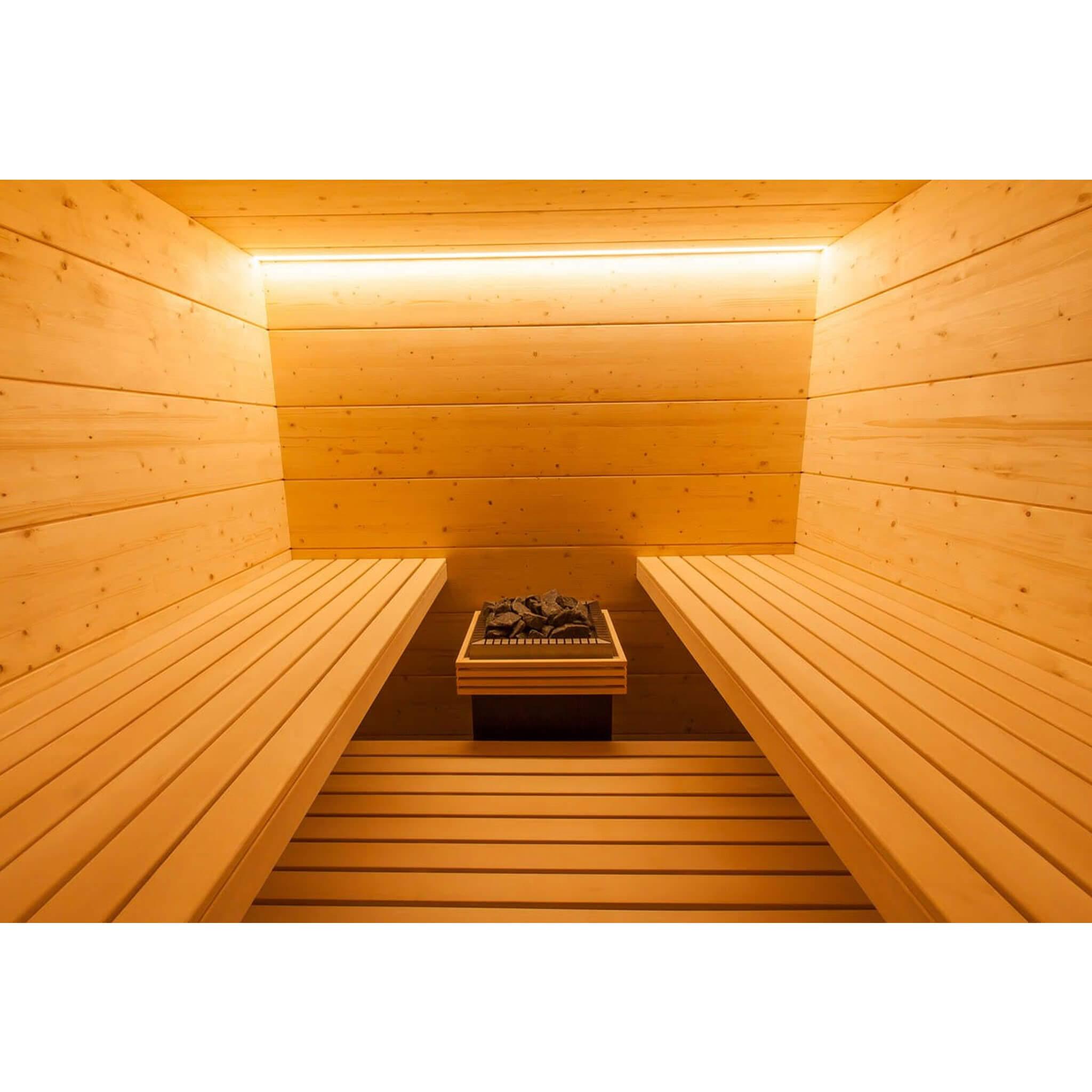The Best Strategy To Use For Traditional Sauna
Table of ContentsThe smart Trick of Traditional Sauna That Nobody is Talking AboutAn Unbiased View of Traditional SaunaThe smart Trick of Traditional Sauna That Nobody is Talking AboutSome Known Questions About Traditional Sauna.
A lot of the weight shed in a sauna is water loss and is re-gained upon rehydrating. Without an uncertainty sauna can be a crucial part of a healthy weight loss program. To check out the distinctions in between standard and IR saunas, I will certainly separate these into verifiable, theoretical, and made distinctions.Hence, the hottest factor in the saunawhich goes to the ceiling directly over the sauna heateris typically in between 185 and 190 F. Traditional Sauna. Claims that a traditional sauna goes beyond 200 F is merely not true and not applicable for electrical saunas offered in the US. The temperature level for a far-infrared sauna is generally established between 120 and 140 F; nonetheless, unlike the conventional sauna, the goal in and IR space is not to attain a heat
Due to this, the temperature level distinction is nearly pointless, since profuse sweating causes both sauna types, yet the method of warming the body is different. In an IR sauna the bather will certainly feel hot and will certainly sweat profusely, yet at much lower temperatures. Hence, if the goal is to invest longer amount of times in the sauna, the IR sauna is a great choice.

Rumored Buzz on Traditional Sauna
When the high temperature is achieved, the elements cycle on and off to preserve the high temperature level. Most standard sauna customers appreciate pouring water over the rocks to develop steam to increase sauna humidity degrees. The benefits of pouring water over the rocks include: making the space more comfy, moistening the nasal flows, and allowing the use of aromatherapy by mixing necessary oils with the water.
In a far-infrared sauna, the warm front penetrate the body to efficiently heat up the body and increase the body core temperature. To achieve this enhanced temperature, Far-infrared emitters create infrared power which is close to the same wavelength as that which the body normally emitsoften described as the "Crucial Variety" of 7 to 14 microns), so the energy is well gotten by the body.
When the energy goes into the body, it triggers the body temperature level to boost and eventually leads to perspiration. In an infrared sauna it is essential for the emitters/heaters to continue to be on almost constantly. Since there is no mass of rocks to preserve warm, the sauna will certainly cool down if the emitters shut down.
As helpful hints discussed above, the sauna bather in an infrared room desires to place himself in front of running emitters to obtain maximum advantage from the warm. The heating time for both rooms can be really different, depending on just how the rooms are utilized. For a standard sauna, a bather ought to enable 30-40 mins for the room to accomplish a desired temperature and to effectively pre-heat the rocks.
The 15-Second Trick For Traditional Sauna
A well built sauna will commonly achieve a temperature of 150-160 F in concerning 30-40 mins. For hotter temperatures, the room may need to warmth for a longer duration.
To some, 15 mins was "wasted" while the infrared energy heated up the timber panels as opposed to warming a body, while others locate a pre-heated space to be more comfortable and believe an elevated starting temperature level is essential to start sweating. The size of suggested use for every space is approximately the same (10-15 minutes per session); nevertheless, due to the lower air temperatures and the capability to feel the impacts of infrared warmth much faster than a traditional sauna, it is not uncommon for an individual to spend a total amount of 20-30 mins in an infrared sauna.
Typical saunas often tend to be bigger (therefore make use of even more power) than infrared saunas, although typical saunas are definitely readily available in one and 2 individual sizes as well. For a two-person conventional sauna, 5x6 or 5x7 dimension more tips here is most preferred. The top bench can easily seat two or 3 individuals and is likewise long enough to lie down throughout the sauna session.


The average price per kWH of power in the U.S. is around $0.11, so a 4.5 kW heating system will certainly cost approximately $.50 to run for one hour, if the heating system runs continually for one hour. Usually a sauna heater will compete 75% of the very first hour and 50% of succeeding hours on since the components cycle once the established temperature is accomplished.
4 Easy Facts About Traditional Sauna Described
A 2 individual far-infrared room is typically physically smaller than a traditional sauna, commonly concerning 4' x 4' or smaller sized. The IR heating unit is commonly 1.5-1.7 kW utilizing a 120 volt 15 amp plug-in solution. Because the space can be utilized sooner than a sauna space, we will think the room is made use of for to of an hour including warm up time.
There is a rarely gone over difference in the social experience between the two rooms. While our culture has actually shed check this a few of the social advantage of the standard sauna experience, it can be extremely socially satisfying. From household time in the sauna, to heart-felt discussions with loved ones, to sauna partiesthe typical sauna experience can cause intimate interacting socially.
A lot of higher end infrared areas include colored light therapy, sound systems and full-glass fronts.